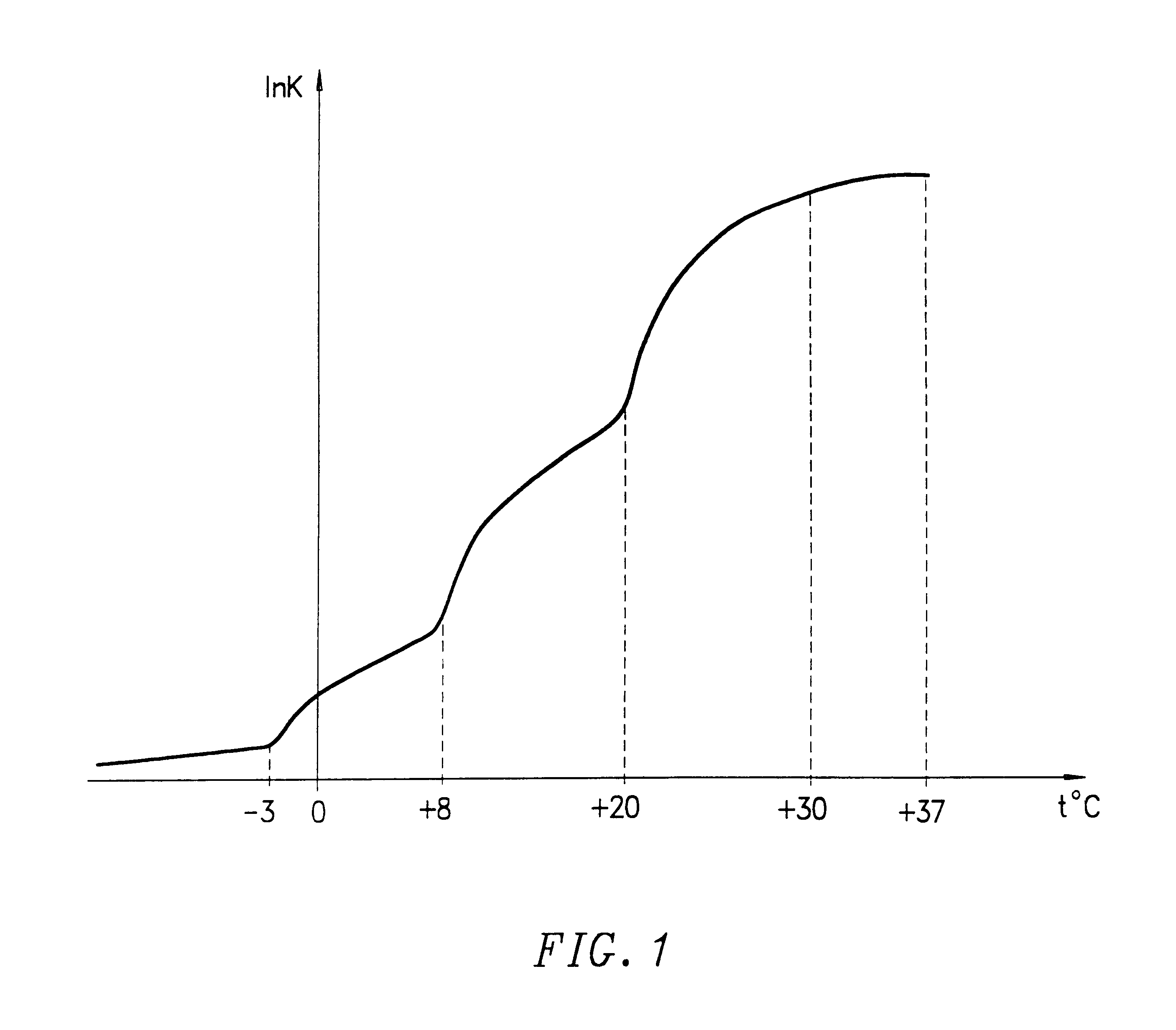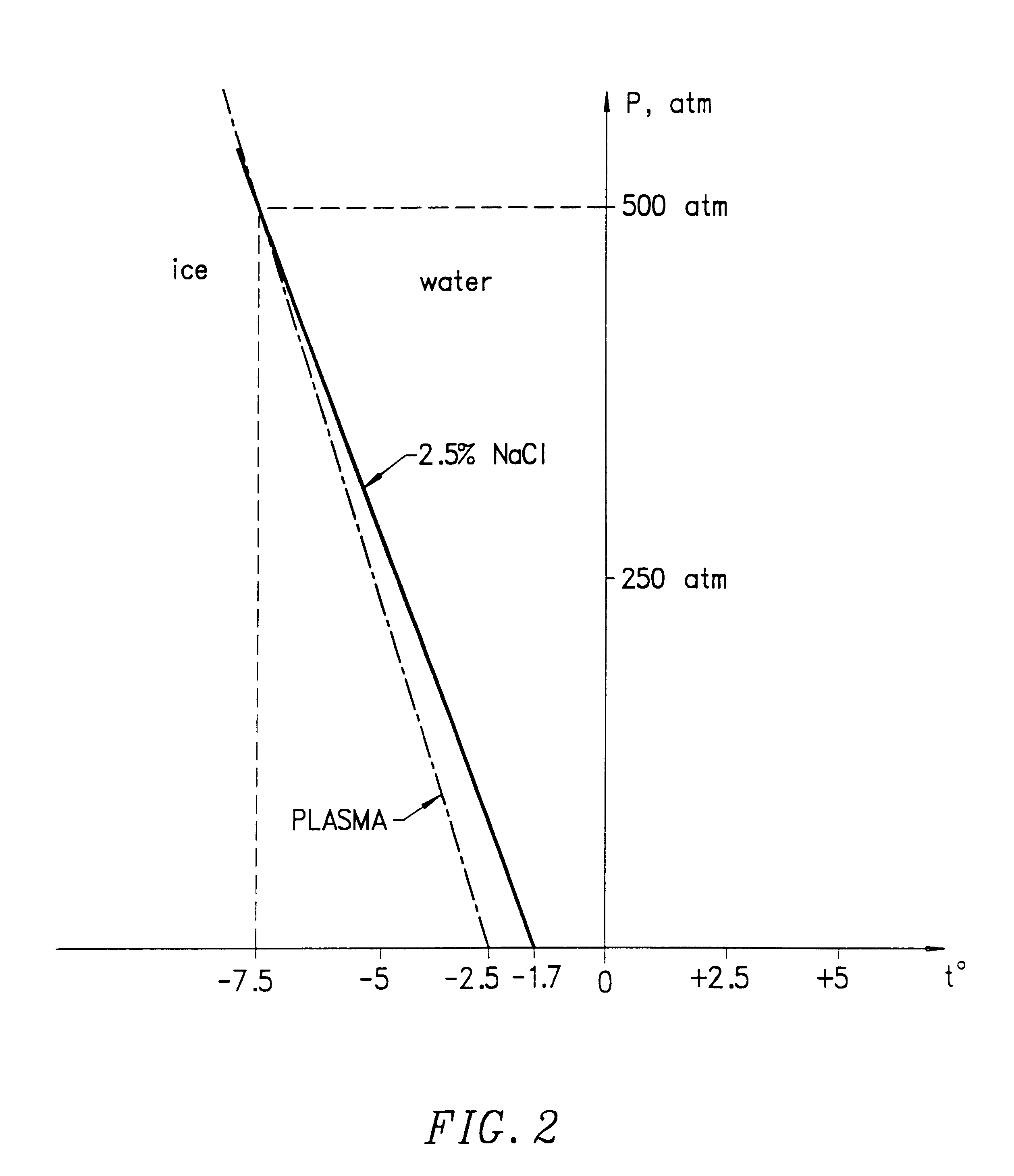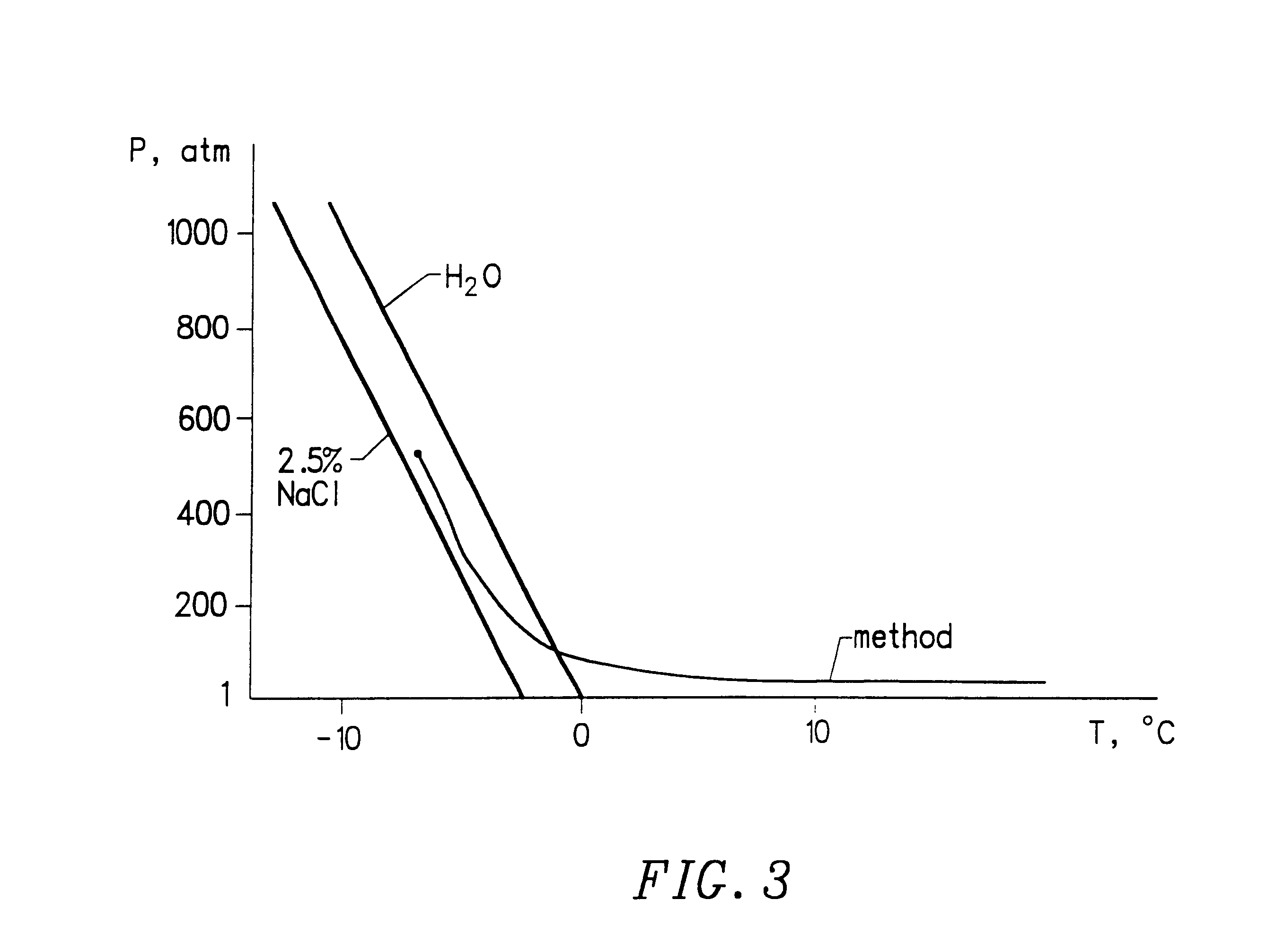Method for preserving blood platelets
- Summary
- Abstract
- Description
- Claims
- Application Information
AI Technical Summary
Problems solved by technology
Method used
Image
Examples
Embodiment Construction
The following is one example of the method of the present invention as used to preserve blood platelets. Heparin may be used as an anticoagulant before this process is begun.
1. Mix the platelets with a preservation solution of 2.9% gelatin, 0.44% sucrose, 1.17% glucose, and 0.49% NaCl.
2. Seal the platelets and preservation solution into a storage bag, making sure that any air has been pumped out The storage bag may be any standard platelet storage bag such as a flexible silicone rubber bag.
3. Cool the platelets and preservation solution to 15.degree. C. within 1 hour.
Continuous agitation is required until the preservation solution becomes a gel.
4. Cool the storage bag to 6.degree. C. to 8.degree. C. within 1 to 1.5 hours.
5. Cool the preservation apparatus to 6.degree. C. to 8.degree. C.
6. Insert the storage bag into the preservation apparatus using the suspension device.
7. Fill the preservation apparatus with a pressure transfer fluid of 2.5% NaCl solution.
8. Seal the preservation a...
PUM
 Login to View More
Login to View More Abstract
Description
Claims
Application Information
 Login to View More
Login to View More - R&D
- Intellectual Property
- Life Sciences
- Materials
- Tech Scout
- Unparalleled Data Quality
- Higher Quality Content
- 60% Fewer Hallucinations
Browse by: Latest US Patents, China's latest patents, Technical Efficacy Thesaurus, Application Domain, Technology Topic, Popular Technical Reports.
© 2025 PatSnap. All rights reserved.Legal|Privacy policy|Modern Slavery Act Transparency Statement|Sitemap|About US| Contact US: help@patsnap.com



